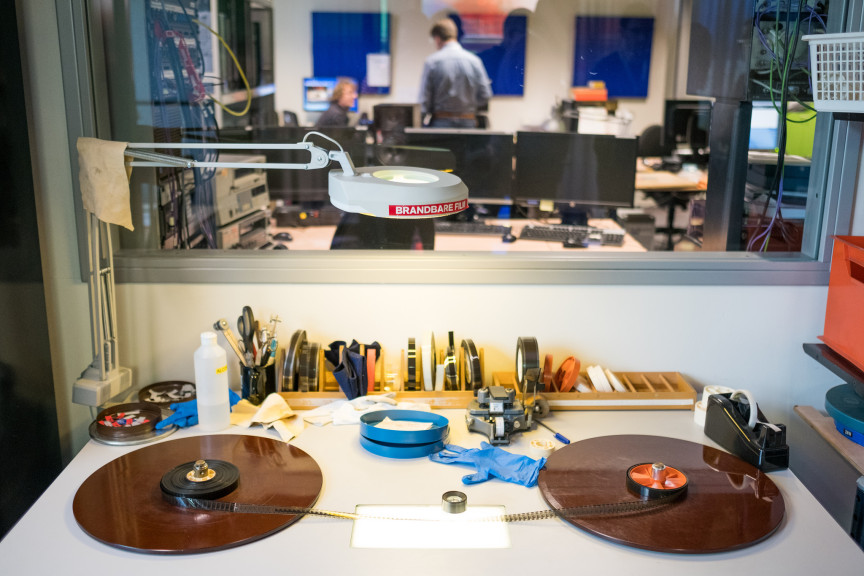Digitization
Why should you digitize analogue carriers, and when and where do you start?

Foto: Sebastiaan ter Burg, CC-BY-2.0
Digitization is an important step in recording analogue audiovisual collections and making them available. It has obvious advantages. It enables an archive to store perishable carriers (think of video formats) in a better way and preserve this unique heritage material for the years to come. Digitized collections can be distributed on a large scale through digital platforms and networks (think of Open Images, Europeana, Digital Collection).
Archive masters can be stored under optimal conditions, while the public is presented with digital copies. Digital storage leads to a huge reduction in the required physical space, although in most cases the original, analogue master is still preserved. All data, regardless of their origin, are put away in the same way. This makes it easier to organize and search large files.
The beneficial effects of digital technology cannot be separated from a number of critical issues: the heterogeneity of carriers and formats, the scale of production and distribution, and the way in which materials must be valued. At least as critical are the dynamic life cycles of digital files and their sustainability. The enormous dependence on technology is perhaps the final piece. The functioning of AV archives depends on digitization and IT technology. This involves knowledge of the digital collections themselves (formats and media, migration, sustainability) and knowledge about controlling and regulating the digital content in systems (content management). More about this can be found in the knowledge theme Preservation.
Formats
The accessibility of archive files in the future depends partly on their format. When a certain technology threatens to disappear, conversion to a new (digital) format is inevitable. A digital format must be able to contain sound and vision for a longer period of time. Choosing a new digital format depends on the available technology and the (user’s) purpose of the file. There are different standards for different uses and these can differ per media type.
The choice for a certain format may be related to the reason for preservation, with the intended durability, with the context and history of the file and with the original format. A format intended for presentation is always derived from the preservation format. A preservation format must be independent of the producer, the wearer and the playback equipment. These formats must be stable and interchangeable, and can be provided with the relevant metadata. Storage should not lead to loss of the authenticity and integrity of the document. When making material available, a copy is adapted to the type of use (for example professional re-use or viewing purposes). There are different standards for digital formats in the IT world. There is no uniformity in the application. We know the official standards of standardization organizations and the de facto standards that are created and managed by non-official standardization initiatives or by producers.
Migration
New technologies for recording and reproducing sound and vision material have always placed audiovisual archives for preservation problems. In the digital age, preservation techniques gradually develop from ensuring that existing collections remain in a good condition, to preserving files in an ever-changing technological environment. The preservation of digital sources for the future therefore simply means: always keep copying. In this way preservation for archives no longer means physical repair and restoration, but permanent technological innovation, or migration.
Migration is not a one-off process. The production of new copies is something that needs to be done every five years. Migration processes must be carefully planned and budgeted. It must be determined which type of material is stored offline and which is stored online. Other questions: is the material compressed or not? Is it stored on robot systems or on hard disks? Migration in the audiovisual domain generates a large number of specific and complex issues. This is mainly due to the large volumes that people work with and the guarantee of authenticity in a dynamic (production) environment. An alternative to migration is emulation. An emulator can be seen as a technical platform in which - besides the content - the original software of a file is also migrated. Documents and files can be opened in their original format or extension via this platform. The advantage is that there is no need to migrate endlessly.

